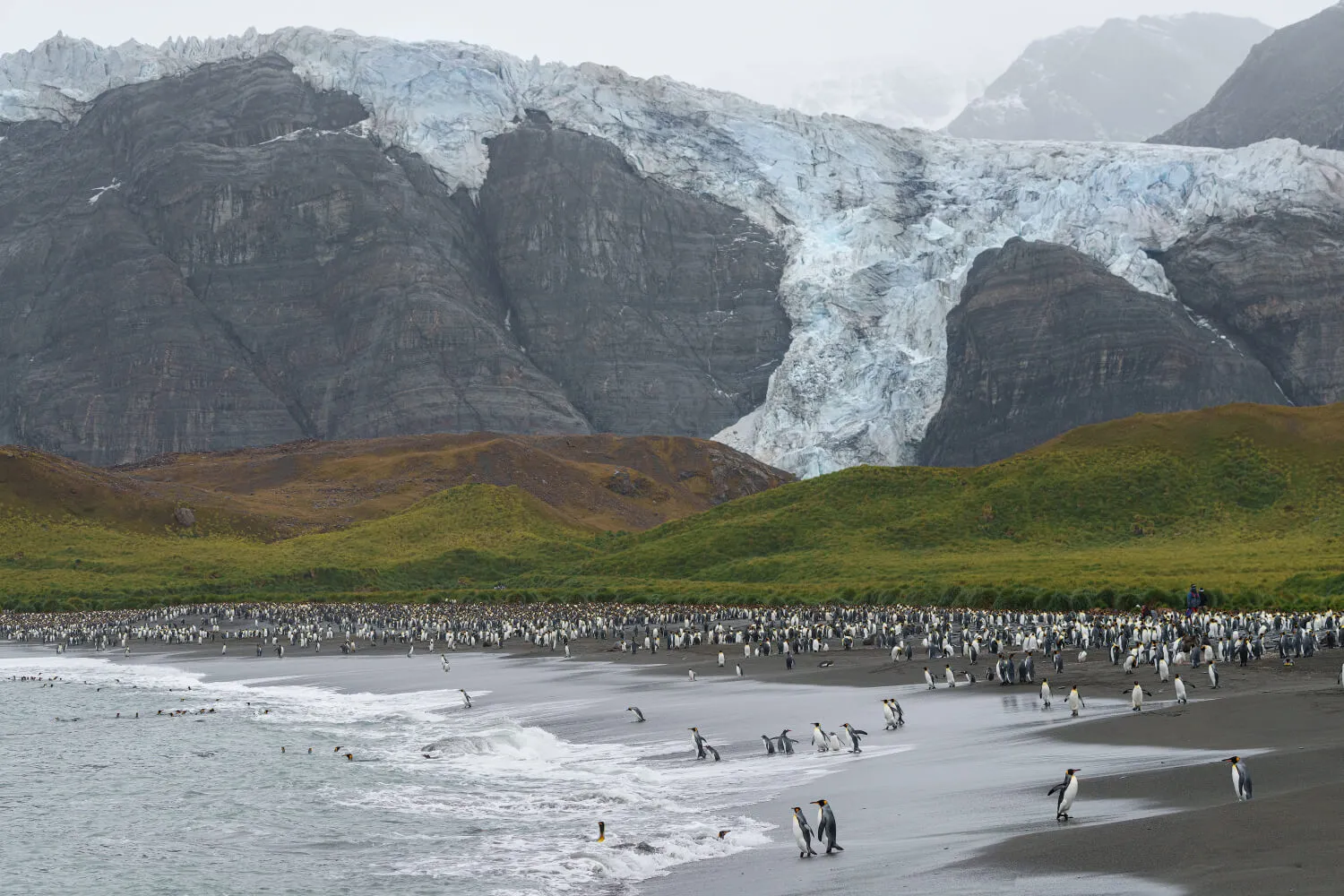

5 Types of Whales You Could See in Antarctica
Antarctica21 guide Dani Abras has been fascinated by whales and dolphins ever since she was eight years old, which led her to pursue a bachelor’s degree in marine biology from Rio de Janeiro Federal University and a master’s degree in biological oceanography from Sao Paulo University. Dani first began traveling to Antarctica in 2016, when she was working as a researcher at the Brazilian Humpback Whale Institute. After falling in love with the Last Continent, she transitioned into being a full-time guide and has now already been in Antarctica for a total of five seasons, which amounts to around 400 days of adventure. On Antarctica21 expeditions, Dani brings this knowledge, as well as over 12 years of whale research experience, in her role as a full-time expedition guide and naturalist aboard our small ships.

On Antarctica21 expeditions, Dani leads lectures aboard our boutique vessels to teach passengers more about the life of whales and their unique characteristics only displayed in Antarctica, such as how orca whales feed and hunt seals on Antarctic ice floes. The whales synchronize their communication underwater and, as a group, swim toward a seal on the ice floe and dive together, provoking a big wave that will wash off the seal from the ice floe, straight into their mouths.But of all her whale experiences in Antarctica, seeing a humpback whale feed is her most memorable. After seeing the whale blow twice, its fluke emerged before the whale rose from the deep waters. Vertically, with its mouth open, the whale’s baleen expanded like an accordion. Dani recalls how her heart stopped when she saw it; for her, the sighting was a dream come true.

As Antarctica21’s official whale ambassador, Dani loves to bridge the gap between science and passengers aboard our expeditions. When she shares her knowledge and enthusiasm about the whales, she loves to see how passengers begin to fully appreciate the giant creatures and why they need to be protected, becoming ambassadors for both cetaceans and Antarctica as a whole.She begins her discussions of whales aboard our ships by explaining how there are two categories of cetaceans in the world: baleen whales and toothed whales. Baleen whales migrate to Antarctica mainly to feed. They have sheets that sieve prey like krill and fish from seawater. Toothed whales such as the orca whale, on the other hand, stay in Antarctica year round and have teeth and hunt sea creatures like fish and squid. In Antarctica, there are eight species of cetaceans that passengers may see on a voyage, including six types of baleen whales and two toothed whales.Aside from the right whale, blue whale, and sperm whale, which are not mentioned here, keep reading to learn about the five most common types of whale species you could see on a voyage with us!
Orca (Killer Whales)
Known for their traditional black and white coats, orcas are the largest member of the toothed whale, or dolphin, family. In Antarctica, orcas are divided into five ecotypes. All of the different ecotypes have varying diet preferences, dialects, hunting techniques, and even different morphological characteristics. Within these ecotypes, the cetaceans are split into different pods: tight family units that live together for life. Their social structures are complex, and most are organized in matriarchal societies led by older females that model specific behaviors to younger animals.

Minke Whales
Minke whales are also the most abundant species of whale in the world. These baleen whales can be recognized by their dark, sleek bodies, reaching up to about 35 feet and weighing 20,000 pounds, making them the smallest of all whale species in Antarctica. Because of their high speed and agility, they tend to be quite hard to spot. For your best chance of seeing minke whales, keep your eyes peeled at all times, as this whale can be seen almost anywhere in the Antarctic Peninsula.

Fin Whales
Only second in size to the blue whale, fin whales are the fastest swimming marine mammals on the planet. These gentle giants are baleen whales and are often seen in groups of two or three. They can be spotted by a unique, asymmetric color pattern on their heads—their right lower jaws are white, while the left side is mainly dark. Despite their great size, these whales can reach incredible speeds of up to 30 miles per hour.

Sei Whales
This baleen whale species is often considered one of the most misunderstood of its kind. After being heavily hunted in the 20th century to the brick of extinction, these whales now have a widespread offshore distribution, which makes studying them quite difficult for researchers. But there’s good news for Antartica21 passengers! Researchers recently identified a sei whale hotspot in the waters around the Falkland Islands. In this location, about 500 individuals have been consistently identified.

Humpback Whales
This baleen whale is one of the largest species of whale on Earth. Humpback whales can grow to be more than 60 feet and weigh up to 40 tons. Humpback whales can eat up to 3,000 pounds of food a day, ranging from krill to small fish. As one of the most active whale species, humpbacks can often be seen breaching out of the water. This behavior is often regarded as a technique they use to communicate with other whales and also as a way they release stress after a competition on the breeding grounds.

Start planning your next big adventure today! Review our limited-time promotions.
Related Articles
Experience the Extraordinary
From dramatic landscapes to close wildlife encounters, every journey to the White Continent is unique. Let's start planning yours together.











.avif)
_INT0328.avif)



